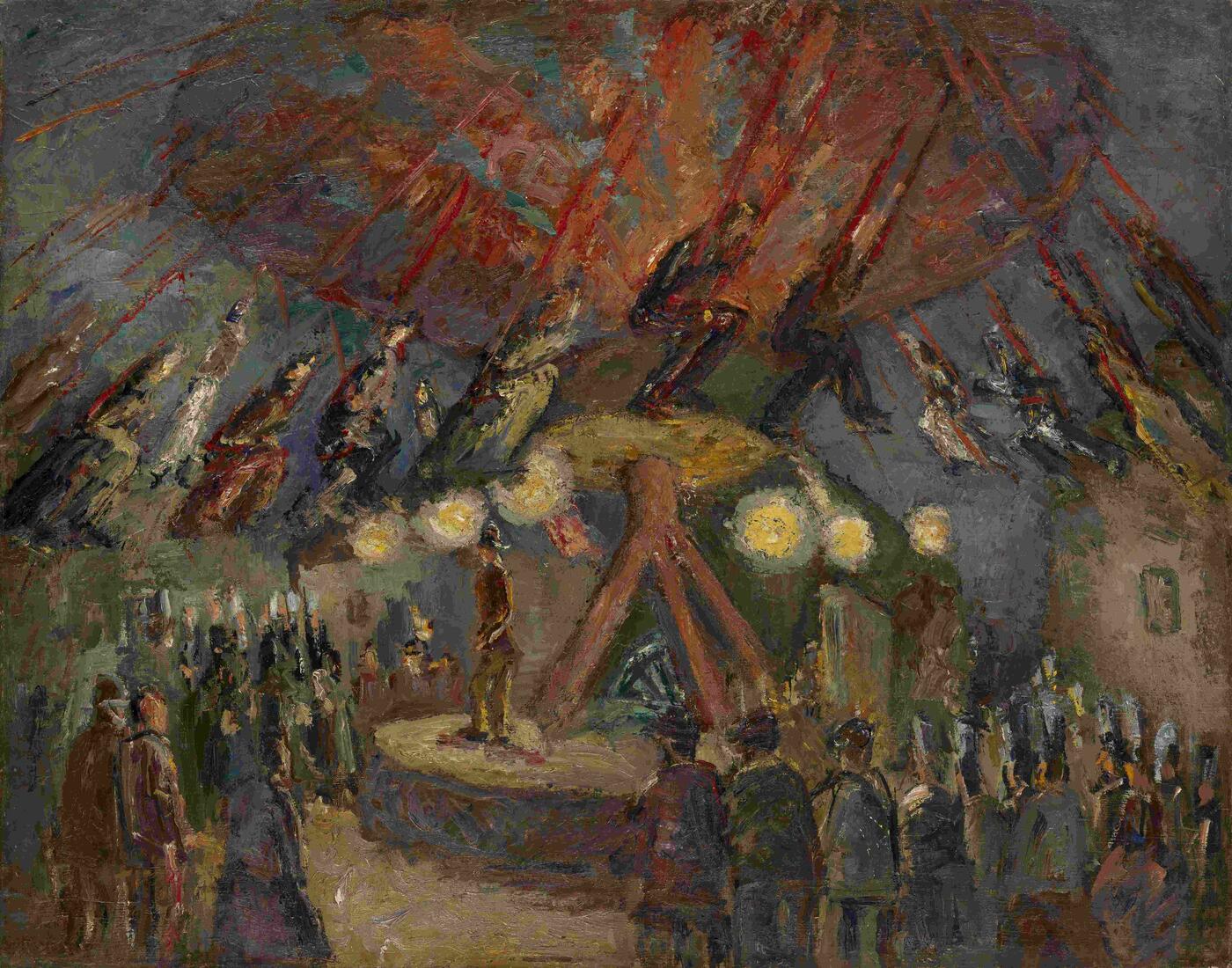MacDougall's Russian Art Auctions 1-2 Dec 2010
1 December 2010

* 353. FALK, ROBERT 1886-1958
Carousel. Brittany c. 1934-35
Oil on canvas, 70.5 by 90 cm.
450,000-500,000 GBP
Provenance: Estate of the artist, label on the reverse signed by the widow of the artist A. Shchekin-Krotova.
Private collection, Israel.
Exhbited: R. Falk, Novosibirsk, Academgorodok, 1967, No. 56, label on the reverse.
Literature: D. Sarabianov, Yu. Didenko, R. Falk. Complete Catalogue of Works, Moscow, 2006, p. 603, plate 860, illustrated in black-and-white.
Carousel. Brittany is one of Robert Falk’s most eye-catching and dynamic compositions. Painted in 1934 following the artist’s visit to a Breton fun-fair, it is the most clear and vivid expression of that same idea of movement which had possessed the artist in his Paris scenes of the early 1930s. Already in his Crane on the River, painted the same year, before he left for the Brittany coast, we can feel that latent energy of movement. It can be sensed from the way the load hangs slightly away from the arm of the crane, and in the gestures of the workers standing nearby, frozen gestures which seem to shout "Down!", "Up!". The theme of captured movement was further developed in the picture Beginning of Construction. Working-Class Area of Paris in which, in addition to the crane transferring a load, a car sweeps past with billowing exhaust fumes. But even among the whole series of canvases based on the idea of conveying movement, Carousel. Brittany stands out, an apotheosis of the expression of this artistic principle, the most thought-through and consistently-formulated of Falk’s works.
In Carousel. Brittany, Falk tries to merge into a single whole both the prim black and white particularity of the Breton costumes and the noisy, riotous fun of a holiday evening. At the same time, despite the obvious "twilight" nature of the event, the artist strives to liberate hints of colour from the clutches of the grey tone which had, so shortly before, played a defining role in his canvases.
Exploiting the principle of centrifugal motion, he invigorates the centre of the composition with the yellow and red patches of the carousel’s lights, which immediately set an increased standard of colour resonance. Gradually, in line with the outward movement, beyond the limit of the colourful whirling, the colours dim, dissolve in the haze, merge into the overall grey tone. At the same time, however, they retain vestiges of their original colour quality and constitute in total a harmonious and eye-catching colour range.
Falk’s composition moves and at the same time is motionless. He achieves an impression uniting movement with an immersion into the substance of some kind of "semi-reality", lending itself to the device of a contrasted juxtaposition, with the bulk of the carousel flying in the air while the spectators stand around in suspended animation. At first glance it seems there may be in this composition an element of chance, like in a snapshot. But this is not the case. The centrifugal motion is closing down, and the contrast is acquiring some permanence. The precisely graduated colour forms a space around the carousel as it "lacerates" the twilight, but without dissolving the carousel in this space. The Impressionistic freedom here is reinforced by Falk’s experiments with post-Cézannism art and the ideas of constructivity. He is seen here not as a simple heir to post-Impressionism, but as an idiosyncratic interpreter of the heritage of Fauvism and Cézannism, bringing together past and present.
Notes on symbols:
* Indicates 5% Import Duty Charge applies.
Ω Indicates 20% Import Duty Charge applies.
§ Indicates Artist's Resale Right applies.
† Indicates Standard VAT scheme applies, and the rate of 20% VAT will be charged on both hammer price and premium.